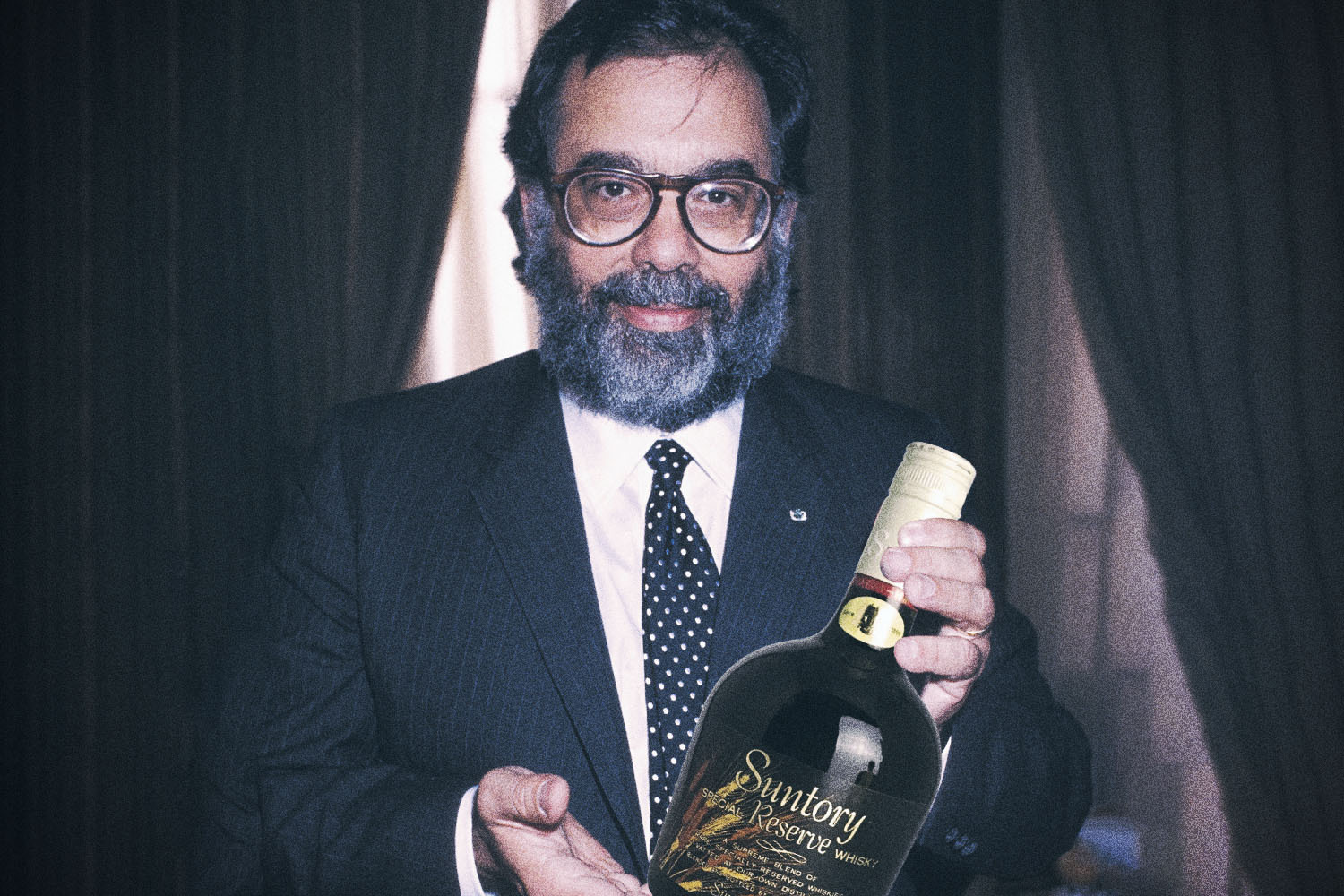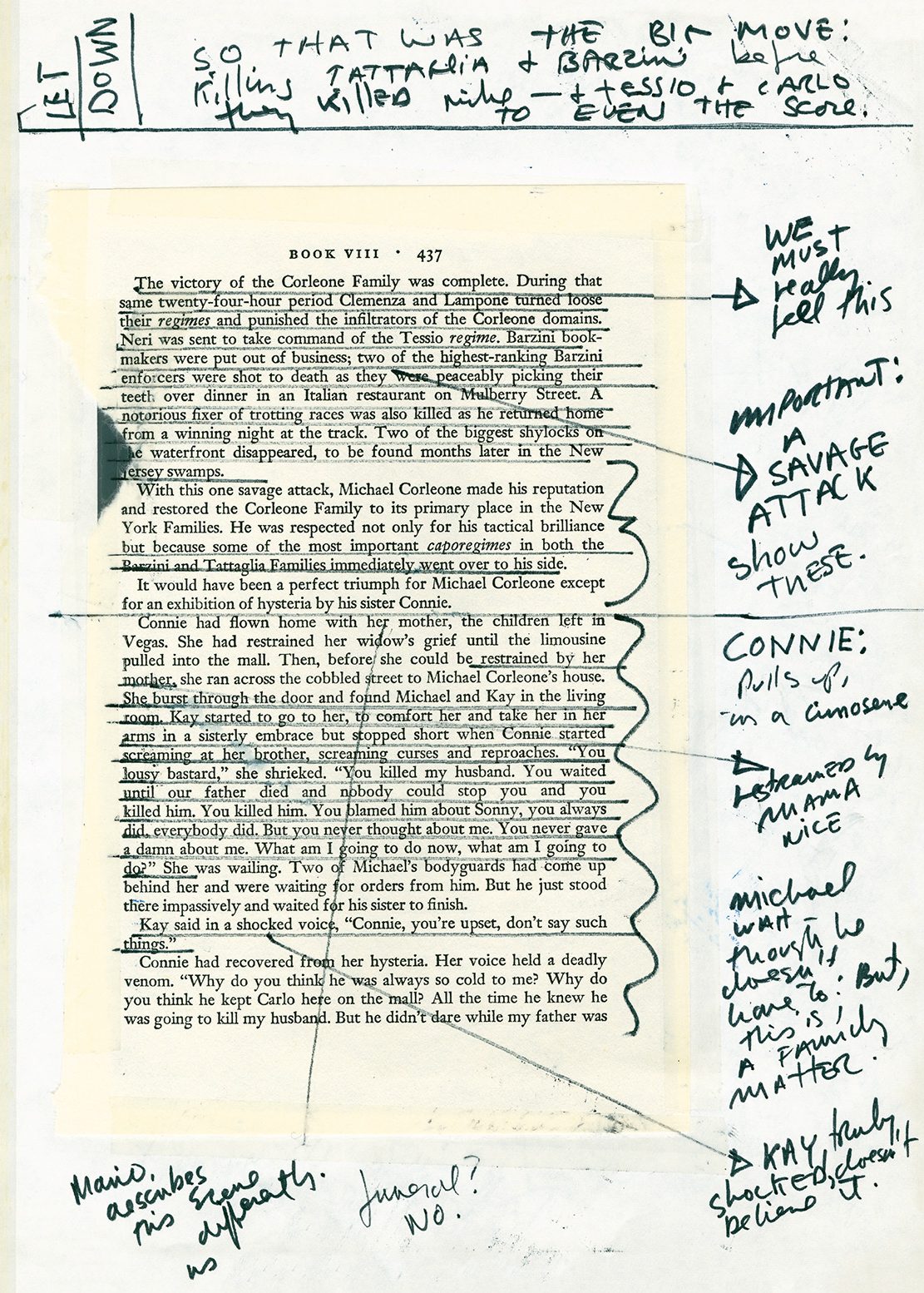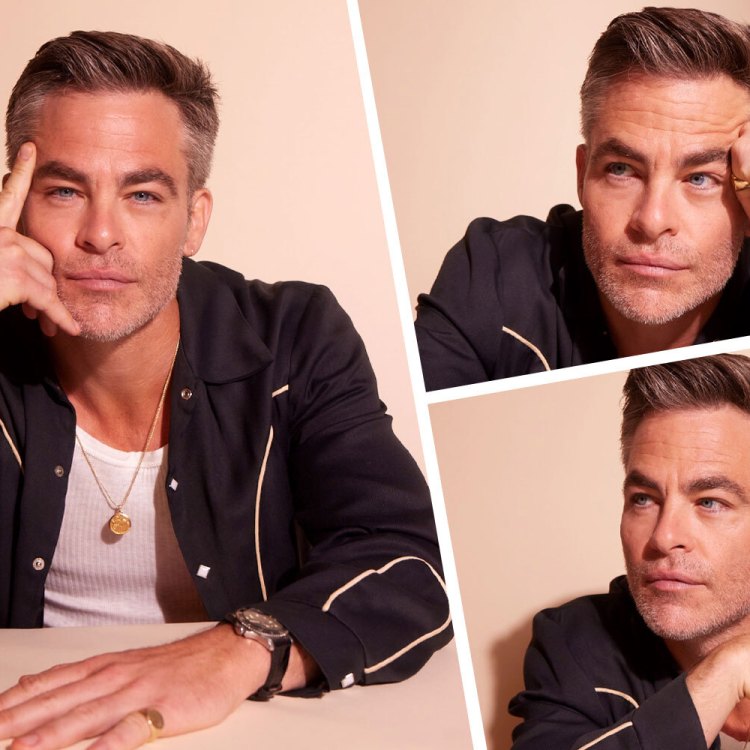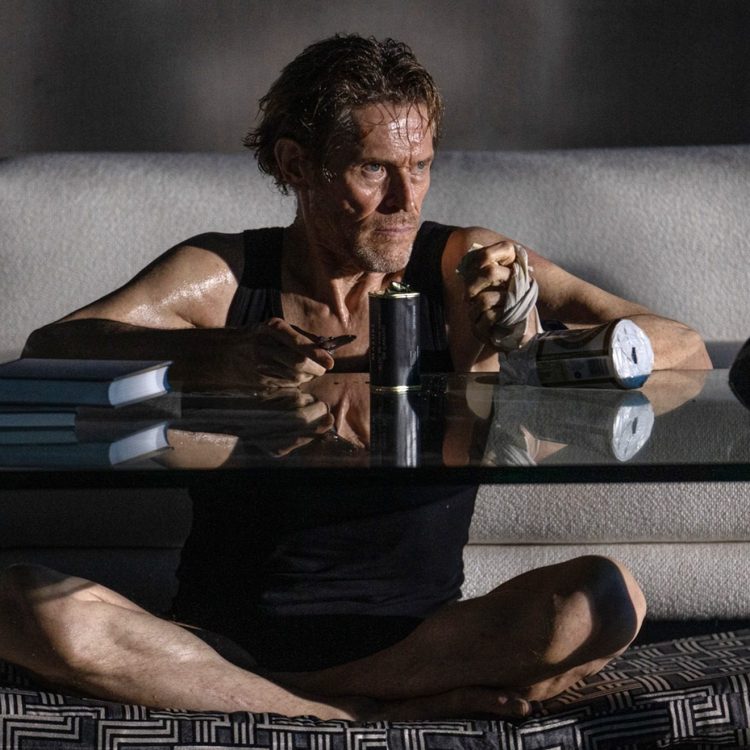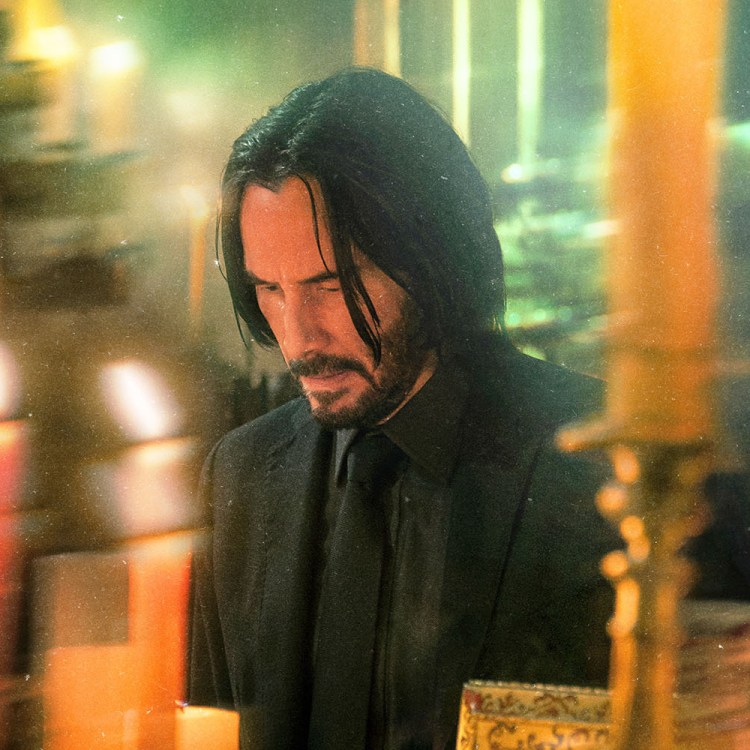Gun to my head, I would probably say that Francis Ford Coppola is our best living American filmmaker. I know that’s a bold claim, histrionic even, but hear me out. Martin Scorsese is, of course, his one serious competitor, having directed just as many great and important films — maybe more — and Marty’s contributions to cinema via The Film Foundation and as a proponent of obscure and foreign films are redoubtable, but there’s just something about Coppola, his idiosyncrasies, the way he takes huge risks going way over budget at his own expense, his innovations, his grand ambitions. And he’s struggled to bring his iconoclastic vision to the screen — Netflix isn’t giving him $100 million for anything, and the guy directed The Godfather. There’s a certain nobility in that, a kind of honor in going from the biggest director in the country to a shunned outsider trying in vain to get his movies made.
Like Scorsese, Coppola makes movies that are deeply, profoundly American. The first line of The Godfather is, after all, “I believe in America.” And what’s more American than the Vietnam War, that imperialist imbroglio when we became the bad guys? There’s the post-Watergate paranoia of The Conversation, and the corruption of the American Dream in The Godfather films (recall, as I’m sure you do, that shot in the second film of young Vito, an immigrant who will find great success in America, looking with something like awe at the Statue of Liberty). Tucker: the Man and His Dream is about the automobile industry and stock fraud, and both The Outsiders and Rumble Fish give us an honest, empathetic look at American youths struggling to find their own identity, to mitigate the malaise of being oppressed by a society that doesn’t want you. The dreamy, sometimes melancholy Peggy Sue Got Married is concerned with nostalgia for good old-fashioned Americana and the false promises of hope, and The Cotton Club explores the harsh and rotten reality of what it takes to run a jazz club, jazz being the most American musical style, a musical genre created by African Americans and co-opted by manipulative whites to make money off of something that isn’t theirs; it’s worth noting that the recently released director’s cut, which is very different from and better than the theatrical cut, spends much more time looking at the role of race and racism in those clubs, and gives the immensely talented Gregory Hines significantly more screen time. Even his gun-for-hire The Rainmaker, a film he took to pay his mounting debts, explores the way the affluent exploit the legal system in this country.
Coppola directs with a prodigious formal bravado; he loves to experiment, to make abstract or eccentric choices, and he isn’t afraid to get show-offy, to flaunt his prowess with an invigorating braggadocio that makes most modern movies look lame and lazy by comparison. You watch his films and see the history of cinema in his virtuoso technique. He thinks in a cinematic language, in sequences of images and edits. He deftly and unabashedly uses just about every trick in the book — dollies, zooms, dolly zooms, dissolves, double exposures. He plays with sound, with color; he uses a variety of lenses to clarify and distort, to warp the world and make the medium bend to his will. Just look at the beginning of Apocalypse Now, the layering of images, a billowing inferno devouring a tree line and the gentle whoosh of helicopter blades oscillating as Martin Sheen’s stoical, spartan face stares at us blankly on the left side of the frame, an apparition that no longer feels anything even as the world burns around him. Consider the gloriously baroque Dracula, the way the count’s shadow moves with its own awful autonomy, reaching out for poor young Keanu Reeves and his ridiculous accent, or the way those menacing eyes manifest in the bloody sky, gazing ghoulishly at the train bisecting the screen. Dracula even goes to a nickelodeon! This is a man who has celluloid coursing his veins.
A key component of Coppola’s brilliance is the crews he chooses to work with, a preternatural gift he shares with Miles Davis. Take, for instance, the great Walter Murch, who did sound and editing for The Godfather and Apocalypse Now. (Interestingly, a lot of Coppola’s films have multiple editors credited, so make of that what you will.) In particular, Coppola has worked with some of the best cinematographers of all time — Gordon Willis for The Godfather, of course, that top-down single-source light, all chiaroscuro, Brando’s eyes pools of shadow and faces bathed in amber light; and Stephen Burum, who shot Rumble Fish with avant-garde abstraction, using spherical lenses to get a black-and-white weirdness; and Mihai Mălaimare Jr., with his expressionist use of digital photography in Twixt, embracing the qualities of the format instead of going for ersatz film in those dream scenes with their unnatural colors and unusual angles, the whole thing looking fake in just the right way as Poe pontificates on beauty. Maybe his most important D.P. is Vittorio Storaro, the unimpeachable Italian, who swaddled portly and pensive Marlon Brando in stygian blackness in Apocalypse Now, that big bald head floating in the impermeable shadows as the cryptic jungle god speaks in languorous asservations.
All of this brings us, finally, to One From the Heart (1981), another insanely ambitious endeavor that all but ruined Coppola. If Michael Cimino’s notorious flop Heaven’s Gate was the death knell of New Hollywood, Coppola’s film is the eulogy no one attended. The film initially had a fairly modest budget and was supposed to be a simpler effort after the tumultuous and very expensive ordeal of Apocalypse Now, but Coppola being Coppola, he kept getting new ideas, his vision kept growing, and the budget swelled to $26 million. He self-financed it through Zoetrope to retain creative control, and when the film grossed less than $700,000, he found himself broke for the next decade.
One From the Heart, which came out 40 years ago (not that many people noticed), is a revisionist romance set in Las Vegas, the least-romantic city in the United States and maybe the most American. Frederic Forrest and Teri Garr play Hank and Frannie, a couple celebrating their fifth anniversary. But you can tell that the relationship has gone stale, the passion dulled into comfortable banality. He’s settled into a life of lethargy and easy familiarity, and she wants to feel passion again, to feel excited and wanted. The (disappointing) festivities are cut short when they have a vociferous fight over, what else, money, when Hank buys their house without consulting Frannie, the latest in an endless succession of fights, all that resentment accumulating over the years. Even though they both promise that they will never fight again, it isn’t long before they’re at it again, and, swearing that it’s really over this time, they vexatiously storm out into the night, looking for companionship, for passion, for someone somewhere to help mitigate their loneliness. Frank finds Leila (Nastassja Kinski), a swoony circus performer, and Frannie finds Ray (Raul Julia), a charming waiter who aspires to be a singer. (The film’s main characters are, importantly, all middle-class working folk, the kind of people who so often get swindled by Vegas). For one wonderful night, they are both happy.
A large part of why viewers stayed away and critics savaged the film (go read Ebert’s review) is that the story of these two lovers, neither of whom are played by movie stars (give Coppola credit for taking that risk) and the acrimonious dissolution of their relationship are not particularly compelling. In a romance, you should care about the characters, you should feel what they feel, and while Coppola clearly does care (and wants us to care too), it’s hard to get invested in these characters because they just aren’t well-developed or even that interesting. Forrest admirably plays Hank as a bitter, rather unlikeable schlub of a husband, a guy who doesn’t listen to his long-suffering wife’s needs — not exactly what you’d call a catch, but you don’t really wanna root for him — and you don’t really care if they get back together, because we never really see them loving each other, never find out much about either of them. They’re already in a rut when the film starts, and it’s just hard to get invested in their relationship.
But that’s fine, because these characters really just exist as an excuse for Coppola to go all out with his bag of tricks, conjuring all kinds of beautiful, imaginative and unimpeachably impressive images, the kind of aesthetic you rarely see in the age of ubiquitous and often lazy CGI. It was shot on sound stages, at great expense, so Coppola and Storaro had complete control. The sets, beginning with the elaborate opening credits and continuing right until the end at the airport, are incredible. Coppola does this trick where Frannie and Hank are in separate rooms and the wall becomes translucent so we can see both of them at once, a kind of play on Coppola’s proficient use of layering images to credit cinematic collages. The film gradually becomes a glorious phantasmagoria of glitz and glint, all those lights shining like man-made stars and neon tubes beckoning to lonely souls looking for a respite from their sad, unremarkable lives. Storaro, using the Arriflex 35 BL, shoots the faux-Vegas as a gleaming paradise, an elysian fairyland; as the night goes on and Hank and Frannie find happiness in their new partners, the images erupt in jouissance, in exuberant color, and everything looks just wonderful, just magical. Storaro’s lighting setups are spectacularly complicated, technical marvels of imagination and craftsmanship, with saffron light pouring through the windows and the characters passing through shadows, through the glow of green neon — the camera following, rising up as they climb the stairs into a new lighting setup, the entire house lit with assiduous and exciting care. The camera moves more here than is typical for a Coppola film, peeping, prowling, moving smoothly through the house, cruising down rain-slick streets and gazing longingly at all those lights as Tom Waits’ comely crooning lies draped over everything like gossamer.
Vegas is tacky, a place of artificial splendor. It’s all so fake, a chicanerous city designed to swindle people into losing money. It was built by knaves on false hope and the allure of unfettered capitalism. But Coppola makes Las Vegas beautiful, a place where people can break out into song and dance in the street, a place where Waits’ sultry voice accompanies you everywhere like a good friend. Compare Coppola’s depiction of the strip to Scorsese’s in Casino, a similarly beautiful but much more cynical film. Robert Richardson gives the strip a sumptuous glow that belies the city’s cruel heart, the camera whipping and wandering, following the gangsters as they prowl the casino. Everyone wants to make a buck, and they’re more than willing to crack a skull to get it. Coppola’s couple are clearly not affluent. They fight over money, over whether or not they should own a house, which plays very differently today than it did in 1982, back when people still bought houses. Money drives them apart, but it’s not money that they want, that offers them the promise of respite from the banalities of their unexceptional sadness; all they want is to feel appreciated, to find that elusive feeling that someone is actually listening. The depiction of domestic strife is so relatable. Coppola’s not concerned with Vegas as a place where poor schmucks with futile hopes can blow their kid’s college fund on craps; his is a Vegas where average plebes can find solace in the presence of another caring soul, if only for a night. In this regard, the film is Coppola’s most romantic, his most optimistic.
One From the Heart harks back to the classic musicals of the studio era (it’s even shot in Academy ratio). Consider Julia and Garr’s dance scene, the couple drifting sensuously around the lustrous room, lucent and lovely. It’s intimate, gentle, their golden embrace captured in one long shot. Later, they dance out the door and into the street, where everyone joins them in an intricately choreographed set piece redolent of Busby Berkeley, and the film bursts into variegated rapture. One From the Heart has a happy ending, the most purely romantic of Coppola’s career, and if it doesn’t feel entirely earned, it’s hard to not be a little moved by Coppola’s sincerity. He doesn’t have a history of happy endings. Consider Diane Keaton’s face disappearing behind that closed door, or Brando’s jungle acolytes bowing down before Martin Sheen’s assassin, or Gene Hackman descending into paranoiac madness. Even the lovesick Dracula, who crossed oceans of time to reunite with his eternal love, dies alone in the end. But here, the lovers end up together, and they both seem so happy about it. Coppola certainly is.
This article was featured in the InsideHook newsletter. Sign up now.

